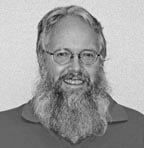Mysteries and Questions on CV History, Part 4

of the Crescenta Valley and loves local history. Reach him at
lawlerdad@yahoo.com.
Here are some more questions I’ve had from readers:
Were there Nazis at Hindenburg Park?
This is a common “local history gossip” item you hear. The story sometimes swells into having the park being some kind of Nazi headquarters. But were there Nazis in the park? The answer is: sort of.
But let’s back up a little. What’s Hindenburg Park? Hindenburg Park unofficially is the western part of Crescenta Valley Park, the section on the west side of Dunsmore, where the dog park is. The name Hindenberg Park goes back to the ’30s through the ’50s, when it was privately owned by a German-American cultural group and was rented each weekend for German-themed parties, picnics, family reunions, etc. It was named for Paul Von Hindenburg, German president from 1925 to 1934. In ’57 it was purchased by the county and folded into the existing CV Park. Today only locals call the west side of CV Park Hindenburg Park.
Hindenburg Park was wildly popular. There was a large German-American population in Los Angeles, and in La Crescenta in particular. Sometimes the events at Hindenburg Park were huge, attracting as many as 10,000 celebrants. German-Americans would flock here from all over Southern California to enjoy an afternoon of German food, drink, music and folk dancing. In the ’30s, the ruling party in Germany was the Nazi Party, and the German national flag featured a swastika. Today we are shocked when we look at old photos of Hindenburg Park and see the swastika displayed, but that was the symbol of Germany at that time. It would be no different than having an American cultural celebration and displaying the stars and stripes.
The German American Bund was sometimes a participant in the German cultural events held at Hindenburg Park. Originally a group formed to promote friendship between the U.S. and Nazi Germany before the war; they seemed a natural fit within the framework of the German cultural events held at Hindenburg. As the ’30s progressed, they became more radical in their views, adopting quasi-military style uniforms and using the Nazi salute. Again, we’re shocked to see old photos of what appear to be Nazi soldiers amongst the oaks of CV Park, displaying Nazi insignia and proudly giving the Hitler salute.
But were they really Nazis there in Hindenburg Park? In ideology, yes; but in technical terms, no. The Bund didn’t receive any support from Germany, and in fact Germany distanced itself from the group. In 1938, Germany forbid any German citizens in the U.S. from being in the Bund, and asked the Bund not to use the swastika as their symbol. Another fascist group of the ’30s, the Silver Legion or “Silver Shirts” led by William Pelly, did receive limited support from Nazi Germany, but I’m not sure if they had a presence at Hindenburg Park.
After WWII, the German cultural celebrations continued at Hindenburg Park until 1957 when the park was sold to the L.A. County. If you go to Hindenburg Park today, there is a very nice informational sign at the lower end of the park that has photos and a map of old Hindenburg Park.
What is that large nameless office building that was recently built right smack in the middle of the 134 and 2 freeway interchange down in Glendale?
That’s a California Highway Patrol communications center for dispatchers. These dispatchers route CHP patrol cars to calls for most of Southern California. There are also some dispatchers for fire departments and Cal Trans.
How did the Station Fire get its name?
The naming of wildfires generally is done by the first responding fire crew or the dispatcher. The fires are generally named for a location or geographical feature near the fire’s origin. In the Station Fire’s case, it was named for the ranger station on Angeles Crest near where the fire started. The 2009 Morris Fire in the Angeles Forest started near Morris Dam, and the recent Powerhouse Fire was named for Powerhouse No. 1, a hydro-electric plant in San Francisquito Canyon.
